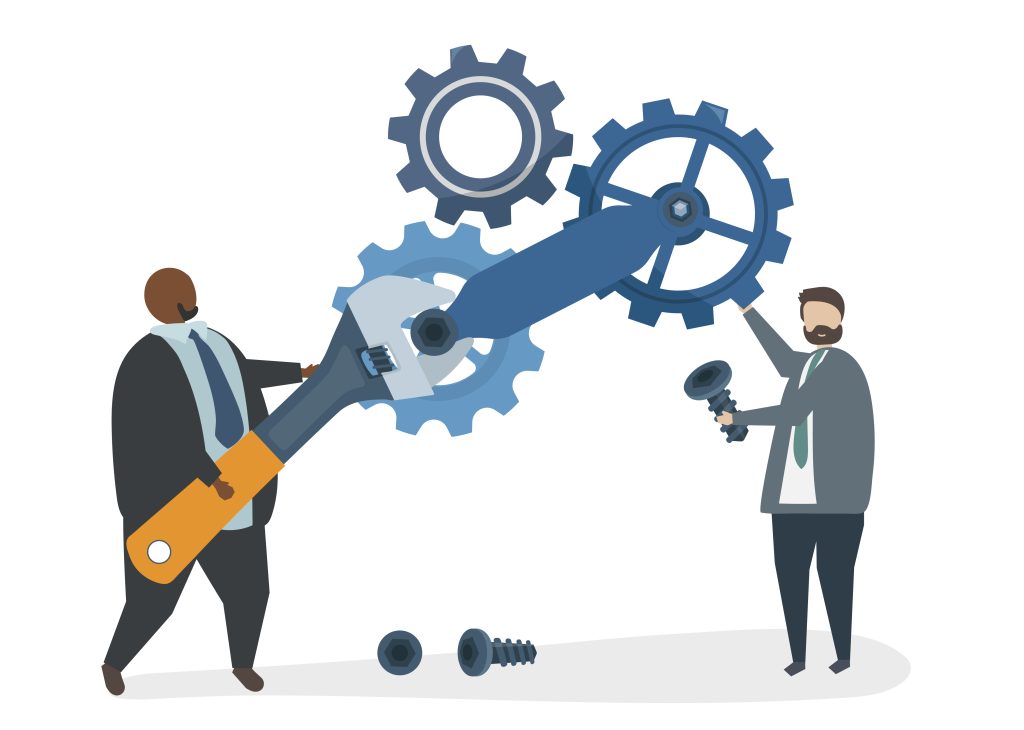Reverse engineering is a meticulous process of dissecting a man-made object to uncover its design and architecture, much like unraveling the mysteries of a complex puzzle. With this you know the essence of a product, device, or system, moving beyond mere appearance to understand its foundational workings. The essence of this practice lies in decoding the decisions made during its initial creation – unraveling the rationale behind each component, its assembly, and its functionality.
This process is not merely about imitating an existing design; it’s a sophisticated blend of analysis, critical thinking, and innovative problem-solving. Every component is scrutinized, its role within the larger system is considered, and its contribution to the overall operation of the system is comprehended. The goal is often to replicate, enhance, or create a new iteration of a product that mirrors or improves upon the original functionality. This technique is a testament to the ingenuity in understanding and reconstructing the intricate tapestry of design and function.
Importance of Reverse Engineering
Reverse engineering is a fundamental technique that is important for a wide array of industries, including software development, mechanical manufacturing, forensic analysis, and even intelligence gathering. In the technology sector, it is frequently used to gain insights into competitors’ products, fostering innovation and setting benchmarks for quality.
It’s an invaluable tool in software development, aiding in security analysis, bug fixing, and updating outdated systems. In the realm of manufacturing, reverse engineering allows companies to dissect and reproduce physical objects, often leading to improvements over the original designs. This method is particularly useful in situations where companies are dealing with obsolete parts or missing original plans.
In educational settings, reverse engineering is a dynamic tool for instructing students in the complexities of product design and engineering principles. It provides a hands-on experience, enhancing students’ understanding of the design and operation of real-world systems.
In cybersecurity, reverse engineering is indispensable for analyzing and developing strategies against harmful software and systems. The adaptability and wide-ranging applications of reverse engineering make it a cornerstone strategy for fostering innovation, enhancing learning experiences, and facilitating adaptation in various industries. This technique not only aids in understanding and replication but also drives forward the evolution of products and systems across numerous sectors.
Applications of Reverse Engineering

A. Industrial Design and Manufacturing
In the manufacturing sector, It allows manufacturers to dissect a product to its core components, offering insights into its construction and functionality. This process is particularly beneficial for analyzing products for which there are no existing blueprints or schematics. By reverse engineering, companies can not only replicate these products but also identify areas for improvement, leading to enhanced designs. This method is especially useful for legacy products, enabling manufacturers to recreate or update older designs with modern technologies and materials. It also aids in quality control, ensuring that new products meet or exceed the standards of the original.
B. Software Development and Security
In software development, This practice is instrumental in enhancing the security of software systems by identifying vulnerabilities and potential backdoors. By deconstructing software, developers can uncover hidden bugs or flaws and rectify them, thereby improving the software’s overall robustness and reliability. Additionally, reverse engineering is used in updating legacy software systems, ensuring they remain functional and secure in contemporary digital environments. This process is particularly important in cybersecurity, where understanding malicious software’s code structure is vital for developing effective countermeasures.
C. Educational Purposes
Reverse engineering is a highly effective educational tool in engineering and technology disciplines. It offers students a practical, hands-on experience in understanding how complex products are designed and operated. Through reverse engineering, students learn to analyze and understand the engineering principles and design considerations behind various products. This approach helps bridge the gap between theoretical knowledge and real-world application, fostering critical thinking and problem-solving skills. By deconstructing and studying existing products, students gain a deeper appreciation of the intricacies involved in product design and development, preparing them for future challenges in their professional careers.
D. Competitive Analysis and Innovation
In the business world, reverse engineering is a strategic tool for competitive analysis and driving innovation. Companies use it to study competitors’ products, gaining insights into new technologies, design approaches, and user-centric features. This knowledge can inspire innovative ideas and lead to the development of superior products that cater to market demands or introduce novel functionalities. By understanding the strengths and weaknesses of competitors’ products, companies can strategically position their offerings, enhancing their competitiveness in the market. This approach not only fosters innovation but also helps businesses stay ahead of industry trends and meet evolving consumer needs more effectively.
Steps to Reverse Engineering
A. Recognition and Identification
- Identifying the Object or System: The initial phase in reverse engineering is the selection of the object or system to be analyzed. This decision is guided by the goals of the project, whether it’s for learning, improving, replicating, or understanding a competitor’s product.
- Understanding Purpose and Functionality: This stage involves a deep dive into the intended use and functionality of the object. It requires a comprehensive understanding of what the object is designed to do, how it accomplishes its tasks, and the problems it solves. This understanding forms the foundation for all subsequent steps.
B. Disassembly or Decompilation
- Physical Disassembly: In the case of hardware, this involves methodically taking apart the product to scrutinize its physical components. This step is crucial for understanding the material, structural, and engineering aspects of the product.
- Decompilation: For software, decompilation means translating compiled binary code back into a human-readable format. This process is key to understanding the software’s structure and logic.
C. Analysis
- Structural Analysis: This entails understanding how different parts or segments of code are organized and how they interact with each other. It’s about getting a clear picture of the internal architecture of the object or system.
- Functional Analysis: Here, the focus is on determining the specific role and operation of each component or code segment. It involves understanding the purpose and process of each part within the larger system.
- Performance Analysis: This step evaluates the efficiency and effectiveness of the components when they work together. It’s about assessing the overall performance of the system and identifying any potential bottlenecks or inefficiencies.
D. Documentation
- Detailed Documentation: This involves meticulously recording the findings from the disassembly and analysis phases. It’s essential for maintaining a clear and comprehensive record of the reverse engineering process.
- Diagrams and Technical Drawings: Creating visual representations such as diagrams and technical drawings helps in better understanding and communicating the structure and functionality of the object or system.
E. Synthesis or Re-creation
- Reconstructing Original Design: Based on the gathered information, the next step is to reconstruct the original design of the product or system. This might involve building a model or prototype.
- Creating Improved Versions: Utilizing the insights gained during the reverse engineering process, new and improved versions of the original design can be developed. This could involve enhancing functionality, efficiency, or user experience.
Best Tools and Tech Used in Reverse Engineering

1. 3D Scanners
These devices are pivotal for converting physical objects into precise digital 3D models. They work by capturing a series of images from different angles, often using laser scanning or structured light, and then stitching these images together to create a highly accurate 3D representation. This technology is indispensable in industries like automotive and aerospace, where precision and accuracy are paramount.
2. Computer-Aided Design (CAD) Software
CAD software provides a versatile platform for manipulating and analyzing the 3D models created by scanners. It enables engineers to explore the design in detail, simulate various scenarios, and make modifications. This software is crucial in virtually reconstructing the object, allowing for a deeper understanding of its design principles and potential improvements.
3. Decompilers
Decompilers are essential in the realm of software reverse engineering, converting binary executable files back into a more understandable source code format. This process is fundamental for analyzing proprietary software, understanding malware, and in scenarios where source code is lost or unavailable.
4. Debuggers
Debuggers are sophisticated tools that allow programmers to execute code line by line to inspect its behavior. This detailed examination is critical for identifying the root cause of bugs or vulnerabilities in software and is widely used in software development and cybersecurity.
5. Disassemblers
Disassemblers are crucial for delving into the machine code level of software. They translate the binary code into assembly language, which is a step closer to human-readable code. This tool is particularly useful for examining the inner workings of software when higher-level source code is not accessible.
6. X-Ray Imaging
X-ray imaging provides a non-destructive means to inspect the internal structures of an object, especially electronic devices with intricate internal arrangements. This method is invaluable in quality control, failure analysis, and understanding complex assemblies without having to physically disassemble them.
7. Spectrometers
Spectrometers analyze the material composition of an object by observing the interaction of light or other forms of energy with the materials. They provide critical information about the material properties, which is essential when replicating or improving upon the original design of a product.
8. Microscopes
Microscopes, particularly electron microscopes, offer high-resolution imaging crucial for examining micro-scale components like integrated circuits on microchips. They allow engineers to see the finest details that are not visible to the naked eye, enabling precise analysis of materials, structures, and potential defects.
9. Network Analyzers and Packet Sniffers
These tools are fundamental in understanding network-based systems and communications protocols. Network analyzers and packet sniffers capture and analyze data packets transmitted over a network. They are essential for security analysis, protocol reverse engineering, and troubleshooting network issues.
Conclusion
reverse engineering is much more than a technical process; it is a testament to human curiosity and a catalyst for innovation. It challenges us to look beyond the surface, to understand, reimagine, and improve upon the world we have created. Its continued relevance underscores its importance not just as a tool for understanding, but as a means for us to evolve and innovate in our ever-changing world.
































































